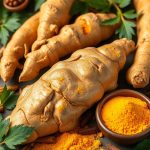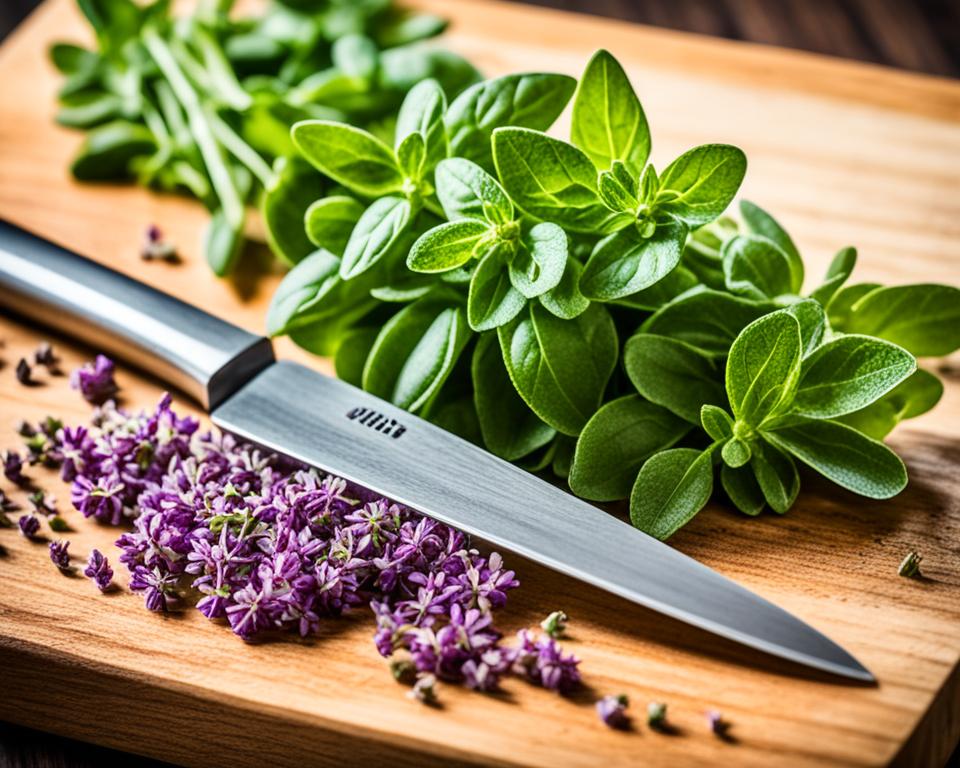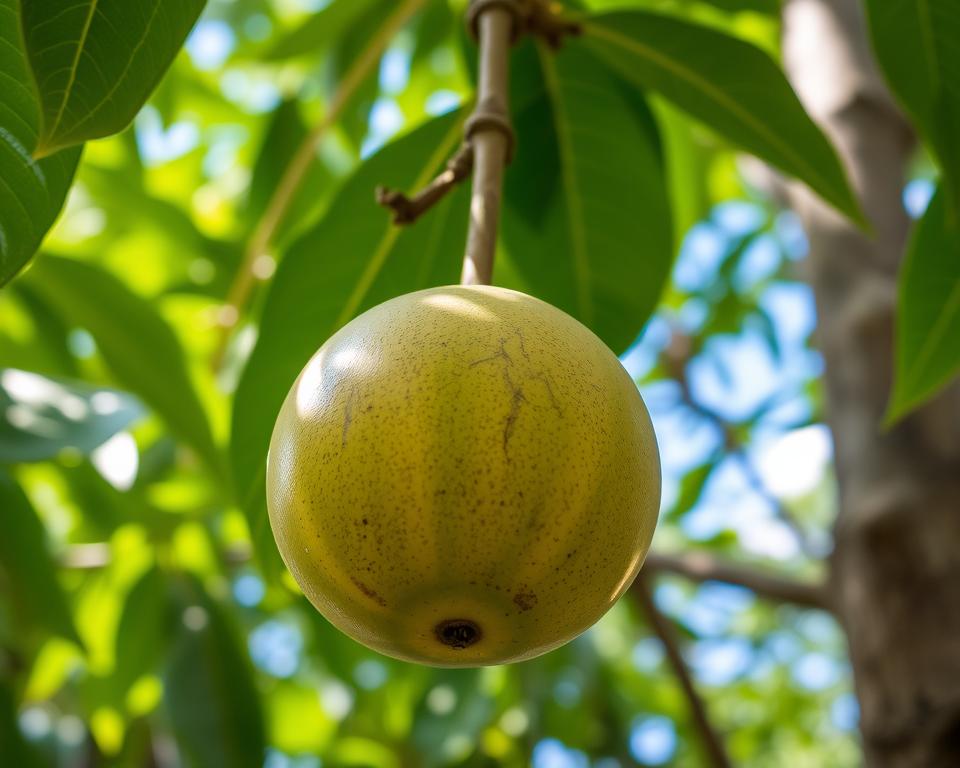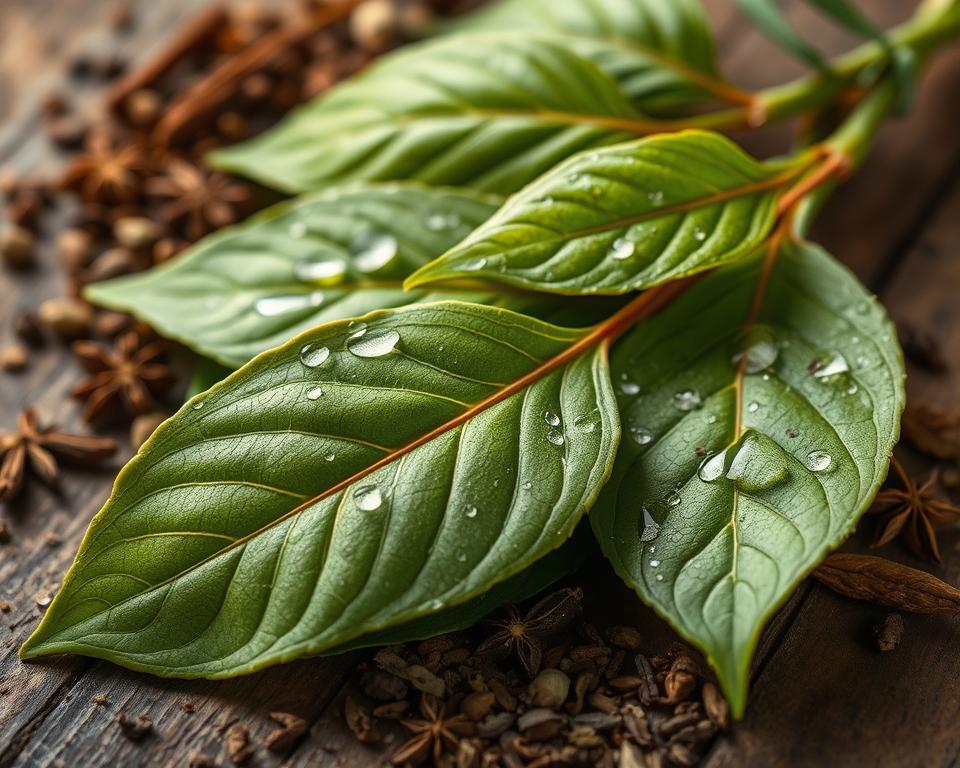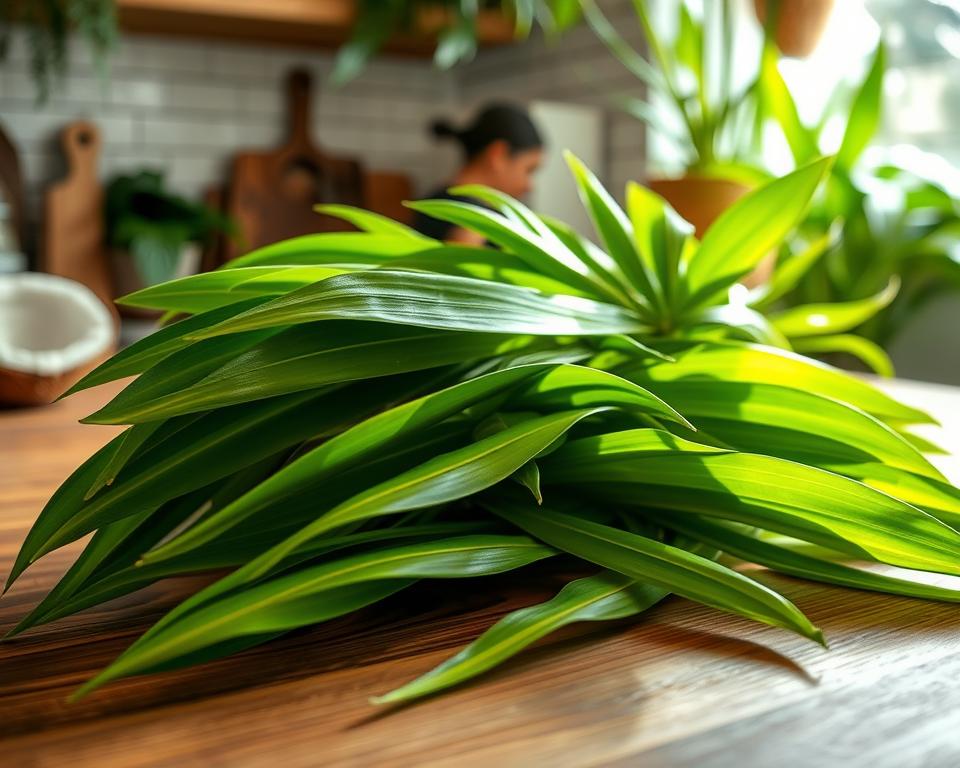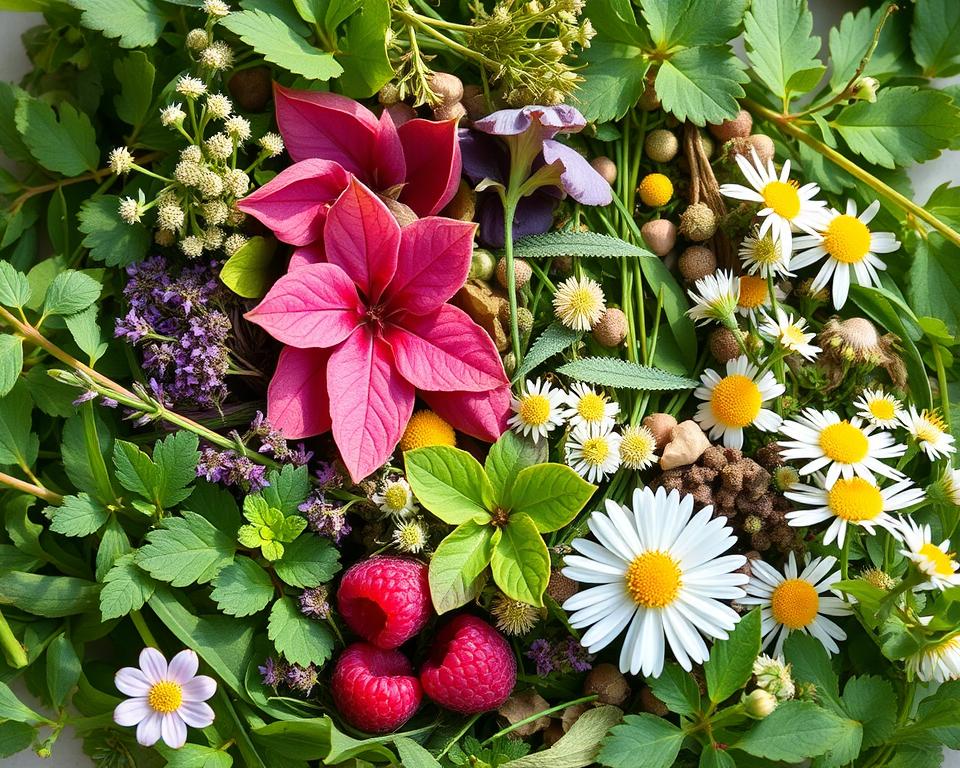In the world of culinary herbs, sweet marjoram shines. It enchants with its warm, slightly sweet scent and versatile flavor. This member of the mint family has a special place in Mediterranean and Middle Eastern cuisines. It adds its unique charm to many savory dishes.
Sweet marjoram goes beyond just being a great herb in cooking. It has a fascinating history and many uses, from aromatherapy to herbal remedies. This piece will take you into the interesting world of sweet marjoram. We’ll look at where it comes from, what makes it special, and how to use it in cooking to bring out amazing flavors.
Read interesting things at : tosawakan
Key Takeaways
- Sweet marjoram is a fragrant, versatile herb prized for its warm, slightly sweet flavor profile.
- Originating from the Mediterranean region, sweet marjoram is widely used in a variety of cuisines, particularly in Mediterranean and Middle Eastern cooking.
- The herb possesses a rich history and is valued not only for its culinary applications but also for its potential benefits in aromatherapy and herbal remedies.
- Sweet marjoram can be easily incorporated into a wide range of savory dishes, adding depth and complexity to the overall flavor profile.
- Proper cultivation, drying, and storage techniques can help preserve the essence and quality of sweet marjoram for extended use in the kitchen.
Unveiling the Aromatic Charm of Sweet Marjoram
The sweet marjoram herb, known as Origanum majorana, is loved for its scent. It has a warm, slightly sweet, and slightly minty taste. This comes from its special mix of essential oils.
What makes it smell so good are terpenes and phenols like linalool, carvacrol, and thymol. These help in cooking, aromatherapy, and herbal medicine.
“The scent of sweet marjoram is like a gentle embrace, transporting you to a sun-drenched Mediterranean garden.”
In cooking, sweet marjoram shines. It adds a nice touch to many dishes. You can use it in stews, meats, or Mediterranean meals.
So, whether you love to cook or are learning, sweet marjoram brings a special touch. Its flavor and smell make any dish better. Enjoy the tradition and taste this herb brings.
The Sweet Marjoram Plant: A Botanical Gem
Sweet marjoram, known scientifically as Origanum majorana, is a perennial herb that many adore. It comes from areas around the Mediterranean and the Middle East. This fragrant plant is a favorite among gardeners and chefs. It is especially loved because it’s related to oregano.
Origins and Characteristics
The sweet marjoram plant has small, egg-shaped leaves and pretty white or pink flowers. These flowers grow close together. It’s a bushy plant that smells great. People often plant it in knot gardens or with other perennial herbs. It’s good at growing in different weather, a plus for gardeners.
Varieties and Cultivation
- There are many types of sweet marjoram. They look different and have their own special flavors.
- Depending on where you live and how you care for it, the plant can live for a few years or longer.
- To keep it happy, the plant needs well-drained soil, lots of sunlight, and to be trimmed regularly. This helps it keep its great smell and taste.
“Sweet marjoram is a true culinary delight, adding a warm, slightly pine-like flavor to a wide range of dishes.”
If you love gardening or cooking, add the sweet marjoram plant to your collection. It truly is a gem that adds a lot of flavor.
Unleashing the Flavor: Culinary Uses of Sweet Marjoram
The sweet marjoram herb is key in the kitchen. It’s loved for its unique, warm scent. This marjoram herb is big in culinary herbs and Mediterranean cuisine.
Seasoning Savory Dishes
Sweet marjoram is perfect for savory meals. Its aroma makes soups, stews, and meats tastier. It adds a lovely touch to veggies and lamb stews.
Enhancing Mediterranean Cuisine
The sweet marjoram herb boosts Mediterranean cuisine flavors. It works well with pizza, pasta, and more. This herb makes dishes like tomato sauce and lamb roast better.
“Sweet marjoram is the unsung hero of the herb world, quietly elevating the flavors of countless savory dishes with its warm, aromatic presence.“
Use sweet marjoram in easy or hard recipes. It makes food tastier in any dish. This herb is a star in the world of culinary herbs and spices.
Sweet Marjoram’s Versatility in the Kitchen
The sweet marjoram herb is well known for its part in savory meals. But it is not limited to this area. This culinary herb brings a fresh taste to sweet treats too, a gem for all kitchens.
Sweet marjoram can spice up various foods like baked goods, desserts, and drinks. Its minty yet sweet flavor pairs well with sugary items. Also, it adds depth to some sweets and beverages.
Adding sweet marjoram to baked treats, like shortbread or scones, gives them a unique aroma and taste. It makes them stand out. Even foods like panna cotta or ice cream taste better with this herb.
Sweet marjoram is perfect for cocktails too. It adds a herbal balance. For instance, it makes gin and tonic more elegant or a whiskey Old Fashioned more interesting.
There are countless ways to use sweet marjoram in cooking. It’s a key ingredient for those who love to get creative with flavors and food.
“The versatility of sweet marjoram allows it to seamlessly transition from savory to sweet, making it a true culinary chameleon that can elevate a wide range of dishes.”
Beyond the Kitchen: Additional Benefits of Sweet Marjoram
The sweet marjoram herb isn’t just for cooking. It’s also known for aromatherapy and herbal remedies. People have used it for its healing properties for a long time.
Aromatherapy and Soothing Properties
Sweet marjoram essential oil is loved by those who practice aromatherapy. It has a calming scent that helps the mind and body relax. Aromatherapists often use it to reduce stress and improve sleep.
Traditional Herbal Remedies
Besides smelling good, sweet marjoram has a place in many herbal remedies. These include easing stomach issues, breathing problems, and heart health. While more study is needed, its use dates back centuries.
| Potential Herbal Benefits of Sweet Marjoram | Traditional Uses |
|---|---|
| Digestive Support | Relieving stomach discomfort, gas, and bloating |
| Respiratory Health | Easing congestion, cough, and respiratory irritation |
| Cardiovascular Support | Promoting healthy blood circulation and blood pressure |
Even though more proof is needed, sweet marjoram shows promise in herbal remedies. Always talk to your doctor before trying any herbal treatment.
“Sweet marjoram’s versatility extends far beyond the culinary realm, offering a wealth of potential benefits in the fields of aromatherapy and traditional herbal medicine.”
Sweet Marjoram in Tradition and Folklore
Sweet marjoram is a fragrant herb with a long history in kitchens. It’s more than just another herb. It’s part of many cultures and their stories. Sweet marjoram has found its way into the heart of traditions and tales weaved around the world.
In ancient times, Greeks and Romans held sweet marjoram in high regard. They used it in weddings to symbolize happiness and the promise of a joyful life together. They believed its sweet scent could bring luck and keep away bad spirits. Thus, it became an essential part of many ceremonies and festivities.
Sweet marjoram had another role besides being part of celebrations. It was believed to protect against evil, especially witchcraft, in some communities. A simple act like putting it under your pillow was thought to bring good dreams and help you sleep peacefully.
The stories about sweet marjoram also include farming it. According to some old beliefs, only unmarried women should plant it. They thought this ensured the plant’s health and vigor. Legend goes that the herb also revealed secrets about one’s love life, growing stronger or weaker based on relationship status.
“Sweet marjoram has a way of captivating the senses and stirring the imagination, weaving its way into the very fabric of our cultural heritage.”
As years passed, the tradition and folklore around sweet marjoram remain captivating. It ties back to ancient happiness beliefs and serves in warding off evil in many stories. This herb’s tale is truly marked in our history and hearts.
Sweet Marjoram: A Flavorful Herb for Culinary Delights
Sweet marjoram is a herb full of flavor. It adds a warm and slightly sweet taste to foods. This makes it a great herb for many dishes, both savory and sweet.
Sweet marjoram pairs well with earthy to citrusy flavors. It’s perfect for boosting the taste of soups, stews, and meats. Even desserts benefit from its subtle yet complex flavor.
In Mediterranean cuisine, sweet marjoram is essential. It goes into dishes such as ratatouille and chicken cacciatore. With its love for garlic and tomatoes, it fits well in Mediterranean cooking.
Besides cooking, sweet marjoram has a history in medicine and aromatherapy. Its essential oils have been used for health and relaxation. This makes it useful outside of the kitchen too.
For anyone who loves to cook, sweet marjoram is a gem. It not only tastes great but also makes every dish better. It’s a must for anyone passionate about food.
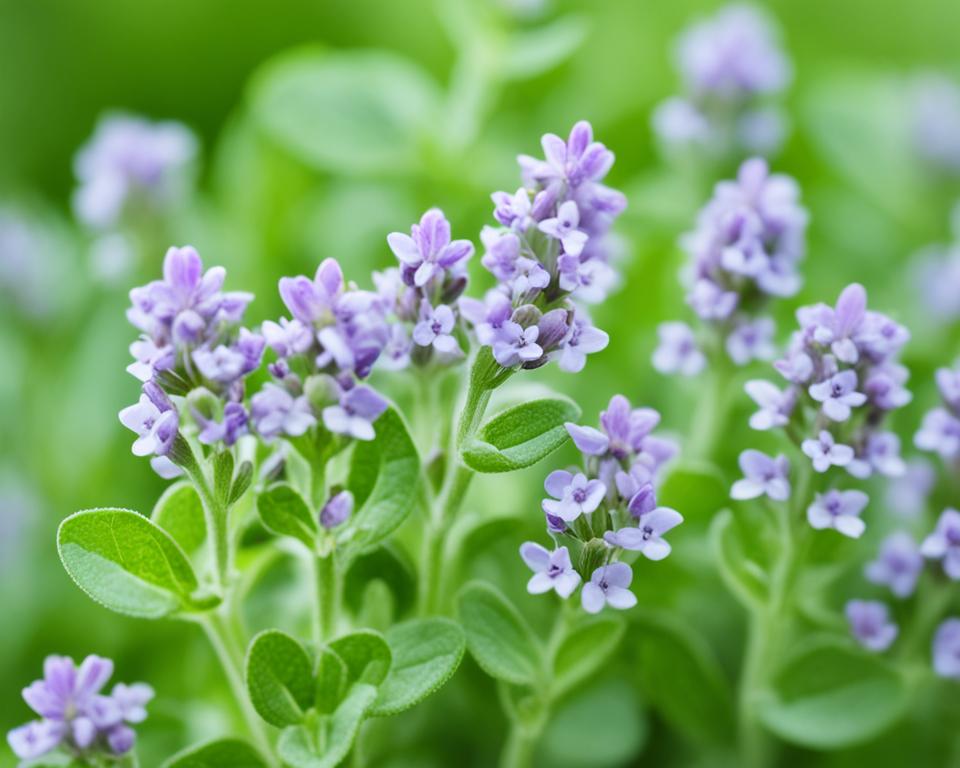
Growing Sweet Marjoram: Tips for Gardeners
Sweet marjoram is a fragrant herb loved by both cooks and gardeners. It brings joy to any home garden. With the perfect soil, lot of sunlight, and a little care, it thrives. It’ll give you plenty of herbs for many years.
Soil and Sunlight Requirements
This herb likes well-drained soil that’s a bit alkaline, with a pH between 6.0 and 8.0. It needs lots of sunlight, at least 6 hours each day. Don’t plant it in heavy, moist soils, because this can cause its roots to rot.
Propagation and Care
You can grow sweet marjoram from seeds or cuttings. If using seeds, start them indoors 6-8 weeks before the last frost. Move the seedlings outside after the frost is over. You can also grow it from cuttings taken in spring or summer. Root them in damp soil or water first.
Sweet marjoram is easy to take care of once it starts to grow. Keep the soil moist, but not too wet. Trim the plants after they bloom to make them bushier. This herb loves warmth and dryness. It needs good air flow around the plants to stay healthy.
Sweet marjoram is a great choice for any herb or kitchen garden. By using these tips, you can enjoy its flavor and lovely appearance. This herb is a win-win for gardeners.
“Sweet marjoram is a versatile and easy-to-grow herb that can elevate any dish with its subtle, yet distinctive flavor.”
Preserving the Essence: Drying and Storing Sweet Marjoram
Sweet marjoram’s wonderful smell can last all year with the right methods. Home cooks and chefs alike love keeping its taste alive. Drying and storing sweet marjoram properly helps preserve its unique smell and flavor. This lets you use it in cooking for a long time.
Drying for Long-Lasting Flavor
Drying sweet marjoram keeps its flavor well. To dry it, follow these easy steps:
- Harvest the sweet marjoram when it’s most flavorful, just before it blooms.
- Wash the sprigs gently and dry them with a clean towel.
- Tie the sprigs together and hang them in a warm, dry, and air-circulated spot. This should be out of direct sun.
- Let the marjoram dry for 7-10 days. You’ll know it’s ready when the leaves are crisp.
- After drying, remove the leaves from the stems. Then, store them in a container that seals tight.
Proper Storage Techniques
Storing dried sweet marjoram well is key to keeping its smell and flavor. Think about these tips:
- Choose airtight storage like glass jars or sealed bags for the leaves.
- Put the containers in a cool, dark place. Avoid heat, moisture, and sunlight.
- Write the harvest date on the container to remember which to use first.
- Whole dried leaves keep their flavor better than ground leaves. So, keep them whole if you can.
Using these drying and storing methods, you can keep sweet marjoram’s smell and taste for a long time. This will make your cooking more flavorful all year.
Pairing Sweet Marjoram with Other Herbs and Spices
The sweet marjoram herb doesn’t just work alone in dishes. It teams up well with many other culinary herbs and spices. This mix creates fantastic new tastes for your meals.
Sweet marjoram shines especially when paired with oregano, thyme, and rosemary. These Mediterranean herbs match its sweet, minty taste. They are key in many Mediterranean dishes.
Besides Mediterranean herbs, sweet marjoram goes great with garlic. The herb and garlic fit together perfectly. They balance each other, adding depth to flavors.
To make your meals even more exciting, try adding lemon to sweet marjoram. Lemon’s citrus notes go well with the herb’s sweetness. Your dishes will have a new bright and fresh taste.
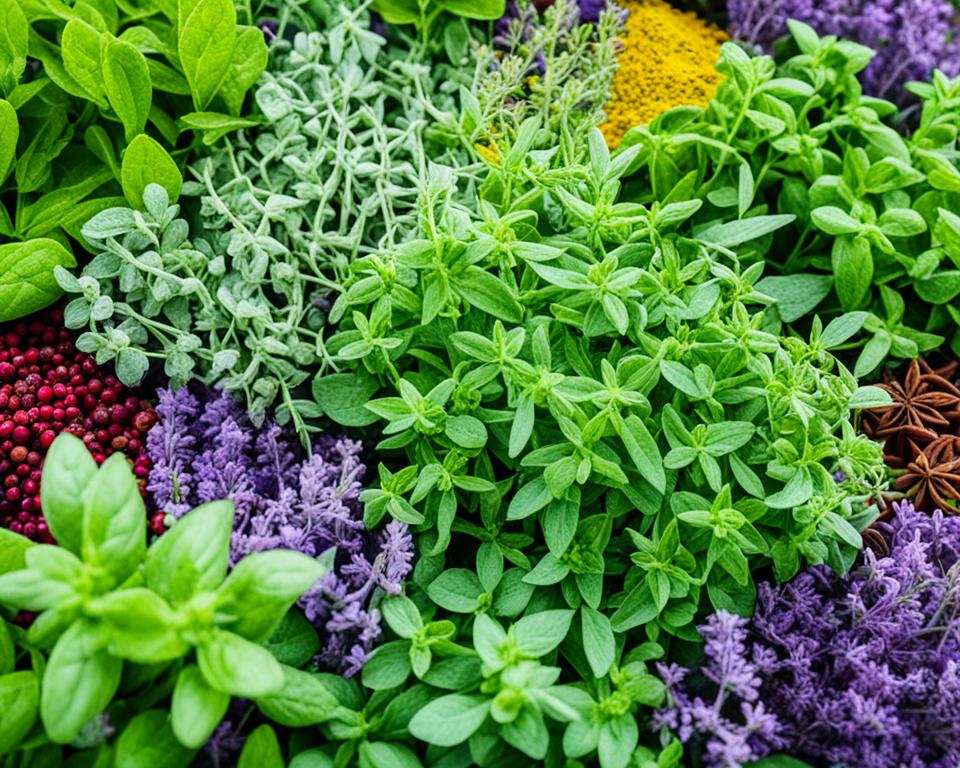
With these pairings, sweet marjoram offers endless flavor opportunities. Use it to enhance any dish, from everyday meals to special delights.
Sweet Marjoram in Global Cuisines
Sweet marjoram is a versatile herb with a unique yet delicate flavor. It is used in many cuisines around the world. Whether on the sunlit shores of the Mediterranean or in the lively markets of the Middle East, it adds a special taste to dishes.
European Delicacies
In Europe, sweet marjoram is highly valued for the flavor it brings. In Italy, it’s crucial for making authentic Mediterranean cuisine. This includes tasty pizzas and aromatic pasta sauces. In Greece, it’s used in fresh salads and delicious meat dishes.
The French also love the goodness of sweet marjoram in their food. It’s a key part of the famous herbes de Provence mix. This adds lovely flavors to meats, veggies, and breads.
Middle Eastern Specialties
In the colorful Middle Eastern kitchen, sweet marjoram is everywhere. It’s in the well-known za’atar spice mix. This is used to flavor pies and grilled meats.
Sweet marjoram also makes middle eastern cuisine stand out. It’s part of the aromatic shawarma. There, its scent blends perfectly with spices and slowly cooked meats.
Whether mixed with other herbs or used alone, sweet marjoram is key to many dishes. It enriches recipes from Europe to the Middle East. This herb highlights the variety found in global cuisines.
Sweet Marjoram’s Role in Sustainable Cooking
The desire for sustainable and eco-friendly living is growing. Using locally sourced, seasonal ingredients is key. Sweet marjoram is one such herb. It helps in creating tasty meals while supporting local growers and cutting down on CO2 emissions.
Sweet marjoram is beneficial for anyone aiming for a green kitchen. It grows well in many places, meaning it’s easy to find. By getting it locally or planting it at home, you reduce the impact of shipping and help local farmers.
Sweet marjoram shines when it’s in season. It marries well with other local goodies. This makes for meals that are fresh, balanced, and good for the Earth. It’s a path to both reducing waste and exploring new tastes.
| Benefits of Using Sweet Marjoram in Sustainable Cooking | Sustainable Cooking Practices |
|---|---|
|
|
Using sweet marjoram benefits our plates and our planet. It’s easy to use and found close by. This herb invites us to cook with care, promoting both better landscapes and stronger local communities.
“The use of local, seasonal ingredients is not only better for the environment, but it also allows us to showcase the unique flavors of our region. Sweet marjoram is an excellent example of a herb that can help us achieve this goal.”
Conclusion
Sweet marjoram is an amazing herb. It enchants our senses and makes food taste better. This herb is truly special among many culinary herbs and spices.
We’ve looked deeply into what makes sweet marjoram special. Its distinct scent and taste improve many dishes. It fits well with a variety of foods, adding a special touch to each meal.
Sweet marjoram is more than just a kitchen staple. It’s used in aromatherapy and traditional medicine. This versatile herb connects us with traditions and the natural world through food.





